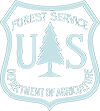WFLC boldly attacks increasing climate and social issues in update to National Cohesive Wildland Fire Management Strategy
Washington, D.C. – The Wildland Fire Leadership Council (WFLC) has released the National Cohesive Wildland Fire Management Strategy Addendum Update (Addendum Update) following a year-long refresh effort to review and identify new drivers impacting the wildland fire management system. The Addendum Update builds on the original 2014 strategy framework and provides new guidance for stakeholders addressing today's wildfire challenges.
The Cohesive Strategy, as its conversationally known, was and remains the solid, strategic framework for implementing significant, meaningful change that reduces the risk of loss from wildfire across the nation. While the implementation of the Cohesive Strategy looks different at all levels, the strategy itself, remains the same. Stakeholders are challenged to reach beyond individual, organizational, and historical silos to collectively define and understand their risk; set landscape-level and communitywide priorities; share and co-manage risk across boundaries and jurisdictions; accept some shortterm risk for long-term benefit; and collectively invest in outcome-based approaches and activities, rather than outputs.
“We cannot approach wildland fire issues in isolation. We must work better together, across boundaries, to make significant progress toward landscape resiliency, community resiliency and fire adaptation, and a safer, more effective wildfire response. The Cohesive Strategy has shown its relevance with a decade worth of success, but it's time to double down on our efforts. The Cohesive Strategy points the way,” said Joan Mooney, Principal Deputy Assistant Secretary for Policy, Management and Budget, US Department of the Interior and WFLC Chair.
“This refresh comes at a pivotal moment as Federal agencies, states, Tribes, and the private sector all ramp up work together to meet the challenge of the wildfire crisis. Building on the strong foundation of the original strategy and synthesizing key learning from the last nine years, this update elevates critical issues like climate change and environmental justice and defines key challenges that are not limited to one agency or organization. This vision will fuel collaboration and help guide how we plan, implement, and evaluate work in wildfire,” said Meryl Harrell, Deputy Under Secretary for Natural Resources and Environment, US Department of Agriculture and WFLC Co-Chair.
The refresh effort allowed for updating the vision of the Cohesive Strategy as well as the three, inextricably intertwined, overarching goals. The vision for the Cohesive Strategy is to safely and effectively extinguish fire, when needed; use fire where allowable; manage our natural resources; and collectively, learn to live with wildland fire.
The updated goals for the Cohesive Strategy are depicted in the graphic below:
In addition, four new critical emphasis areas that are significantly affecting the behavior, duration and impacts of wildland fire; and five key challenges to implementing the Cohesive Strategy were identified.
The Addendum Update, together with the 2014 National Cohesive Wildland Fire Management Strategy, are considered merged as the Cohesive Strategy going forward.
“It would be a mistake for us to ignore the increasing wildland fire challenges our nation faces today. The Wildland Fire Leadership Council is the steward of the Cohesive Strategy and we undertook an in-depth evaluation of the Cohesive Strategy to bring it up to date with the current wildland fire realities across the country. The Cohesive Strategy and its new Addendum give us the framework and allow for maximum flexibility to address today's rapidly changing wildland fire environment,” explained Mike Zupko, Executive Director for the Wildland Fire Leadership Council.
Originally established in 2002, the Wildland Fire Leadership Council is an intergovernmental organization of federal, state, tribal, county and municipal government officials convened by the Secretaries of Agriculture, Interior, Defense, and Homeland Security, dedicated to promoting consistent wildland fire policies, goals, and management activities. The Council provides strategic recommendations to help ensure policy coordination, accountability, and effective implementation of federal wildland fire policy and related long-term strategies through a collaborative environment to help ensure effective and efficient wildfire management, promote fire-adapted communities, and create resilient landscapes to achieve long-range benefits for society and nature.








